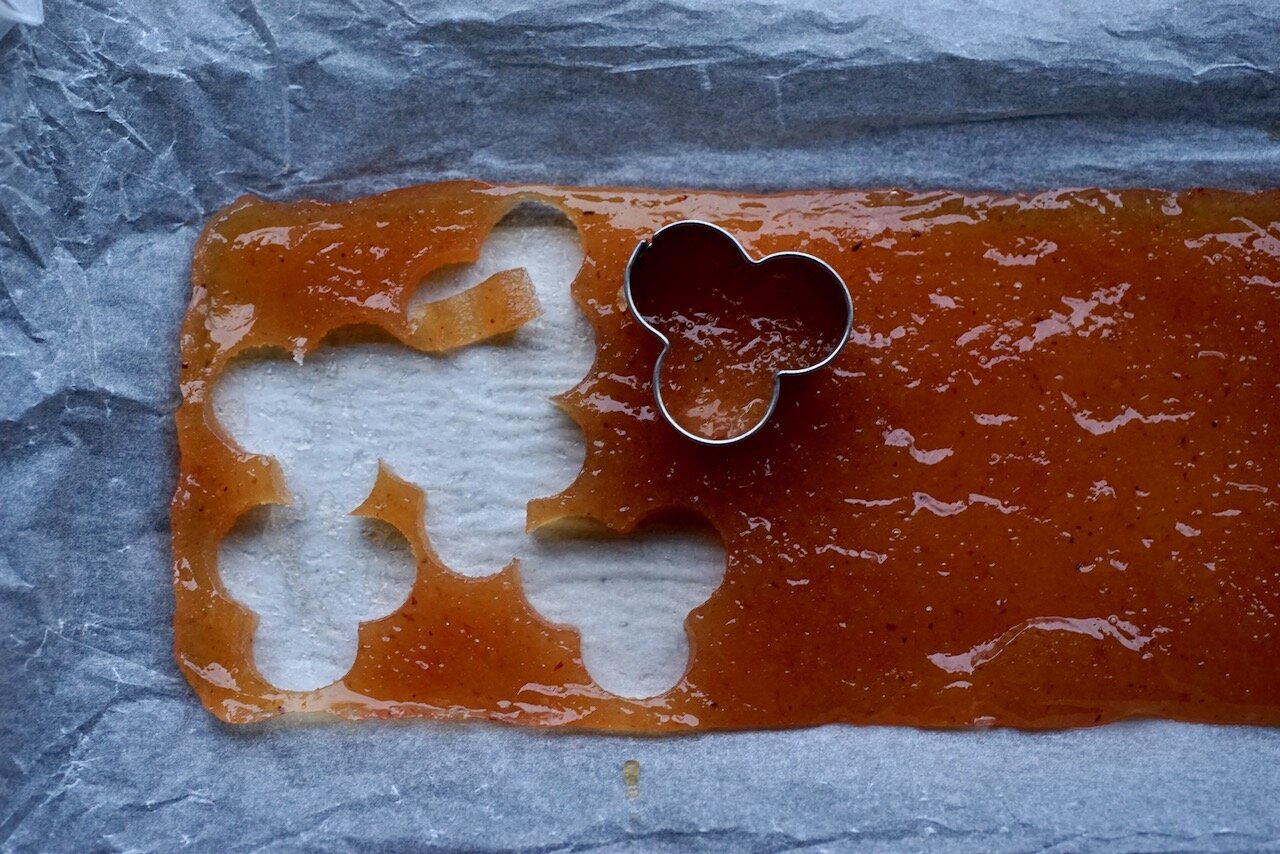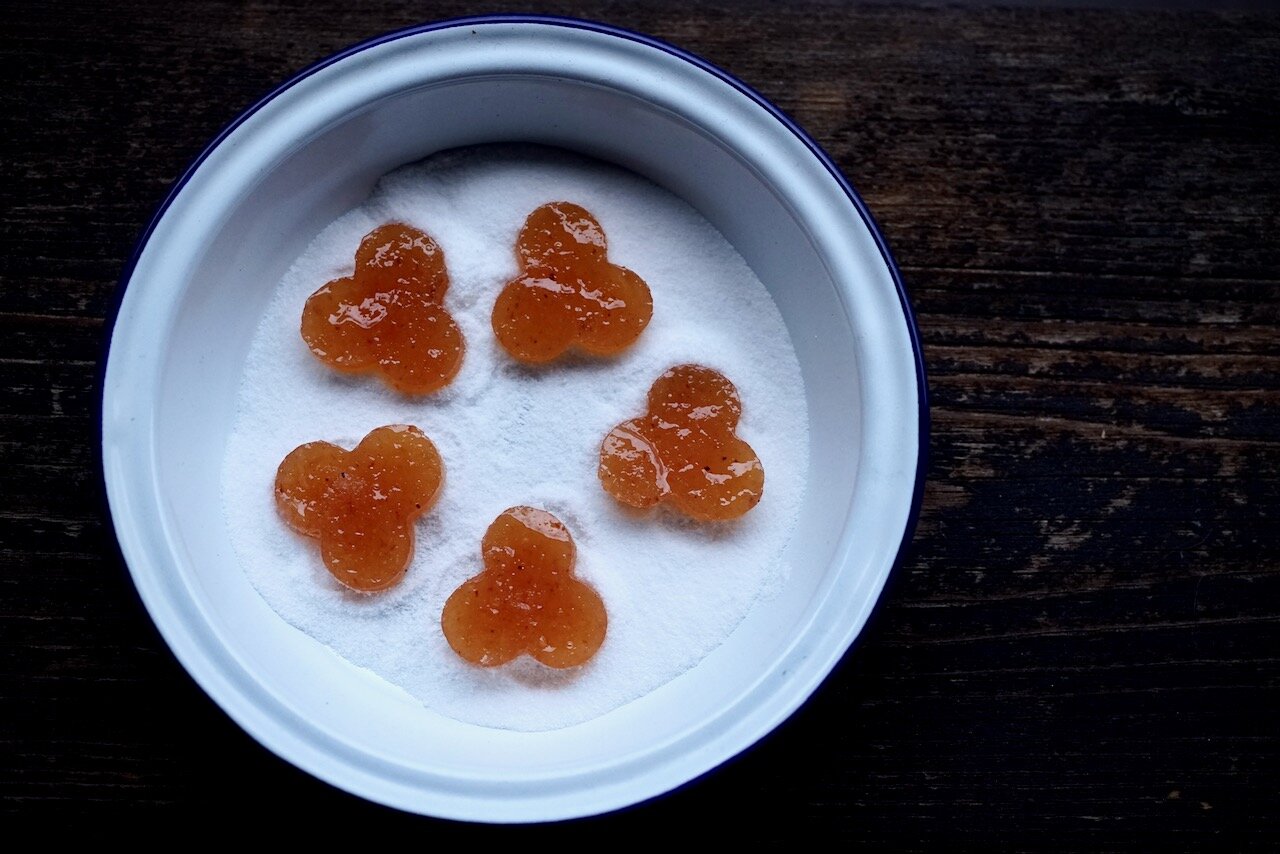Quittenpästli
Although they’ve been described as the gummy bears of the Middle Ages, these quince-based candies are much more sophisticated.
Not chewy, but rather firm and tender, this confection is made of two simple ingredients, quince and sugar and, according to the Kulinarisches Erbe, recipes have been around for centuries. Although they might have been ubiquitous in centuries past, today they are harder to find, but definitely worth seeking out or making your own.
A Ode to the Quince
D'Quitte si nid unsympathisch
Aber guet usgseh tüe sie nid eso
Quince are not without their merits, although looks are not one of them.
So laments Züri West lead singer Kuno Lauener in his ballad to aging, Quitte (quince), where he praises the character of the misshapen fruit. They hang around on the tree and you don’t have much to do, until you decide you want something from them, then there is no illusion, you’re stuck in the kitchen all day.
I mim Garte si sie mir die liebschte
Mit dene hesch ke Müeh
Die hange eifach dert u warte
They’re my favourite in the garden and don’t give me any trouble. They just hang there and wait…
Unfortunately for us, only one single quince was hanging, waiting on our quince tree this year (can I blame 2020 for this too?). Not enough to make anything, I had to get some reinforcements from a local farm shop for Sam’s annual supply of membrillo, as well as these delicious Quittenpästli that I had been meaning to make for years.
(The pictures above show the quantities for the following recipe, halved).
There are great recipe sources for Quittenpästli. For cooking the quince I borrowed from Sam, who makes his membrillo using this straining method. He also suggested the cookie cutter shape, remarking that it looked a bit like a quince itself.
I consulted the Fülscher cookbook, which suggested using slightly less sugar that 1:1 (about 80%), which I found to be an improvement. The wonderful Swiss food blog Einfach Essen bakes her quince in the oven first. My friend Heddi at Cuisine Helvetica, mentions the connection to Christmas in her post here.
Making the Pästli is time-consuming, but I think it’s ultimately worth it. This is a unique confection that keeps well, and has an amazing flavour—almost honey-like with a smack of apples.
about 1 kg quince
around 400-500 g sugar
more superfine sugar for decoration
Line a tart pan with removable bottom with parchment paper and sprinkle with a fine layer of sugar.
First, you need to prepare your quince:
Gently wash them and scrub off their furry coating. You don’t need to peel or core the quince, just take out the spiky bit at the bottom and cut away any parts that are rotten or have black spots. Then chop them roughly and pop them in a large pot.
Add about 5 cm (2 inches) of water to the pot, enough so the quince won’t stick and burn, but not so much that they are completely covered.
Bring the water to a boil, and then turn the heat down to medium low and let the quince cook. Keep an eye on them and make sure they don’t stick to the bottom of the pan. If they start getting stuck, add a splash of water and stir well Keep doing this for about 45 minutes, then check to see if they are softened.
Once they start breaking up, you can mash them a bit with a potato masher, then add a splash more water and cook a few minutes longer.
When the quince are broken up and start falling apart, you can begin straining. Place a metal strainer over a bowl, and then use a ladle to push the quince purée through, scraping the bottom of the strainer with a spatula. It is much easier to do this while the quince is still warm.
Rinse out your cooking pot and place it on a scale. Weigh out the quince purée (typically from around a kilo of quince you’ll get around 500 g purée).
Now it’s time for some basic math:
You want to add 80% sugar to the purée—so for 500 g quince add 400 g sugar. (Hint: just multiply the amount of purée by 0.8).
Now cook this over medium heat, stirring regularly, until it thickens up a lot. You don’t only want to be able to see the bottom of the pot when you drag your spoon across, but you also want to see it start to come away from the sides of the pan when you stir. This can take up to 30 minutes.
Now spread it into your prepared pan. Cover the top with parchment or plastic wrap, then let sit for a day or two until it firms up.
Either slice it into shapes, or cut it out with small cookie cutters.
Toss in super fine sugar and store in an airtight container between sheets of wax or parchment paper for up to a month.
I like to use metal tart pans with removable bottoms—to me these work best and make it really easy to lift out the parchment paper and cut out your Pästli in the end. If you don’t have one, you can simply spread it into another pan, or even just on a baking sheet.
When cooking the quince, if they stick to the bottom of the pot, just add a bit more water, or turn down the temperature.
More Quince?
Quince Gnocchi





















